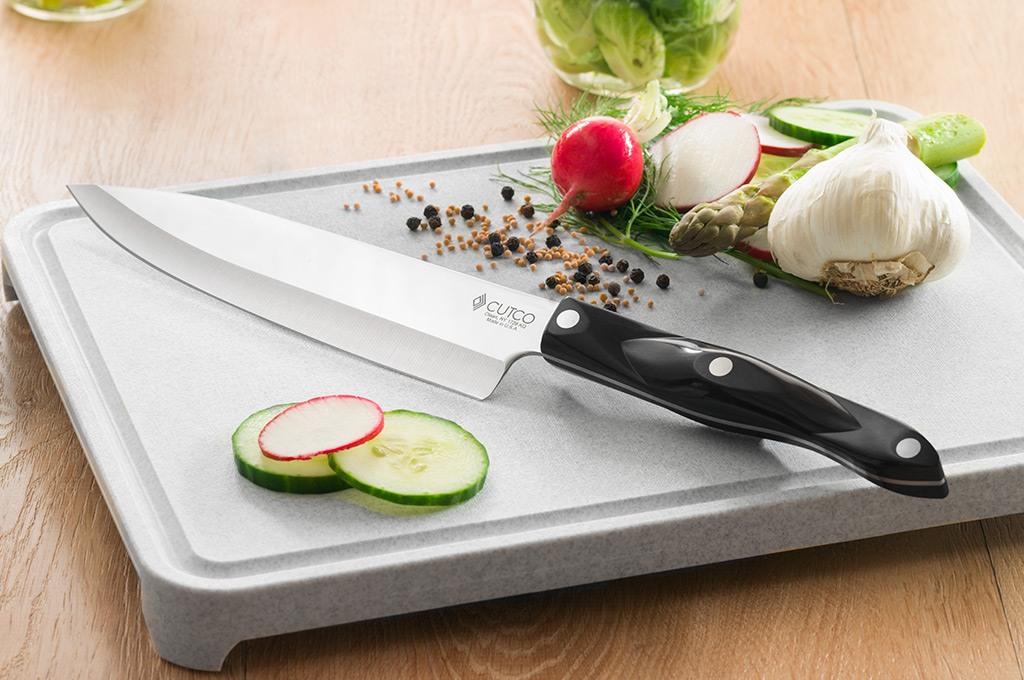Our slicing knife guide is complete. This page discusses this vital kitchen tool’s features, applications, and benefits. Whether you’re a professional chef or a home cook, mastering a slicing knife will improve your cooking. Let’s learn all about the versatile and essential slicing knife.
What Is a Slicing Knife?
Slicing knives dominate culinary instruments. The extended, narrow blade of this kitchen tool glides through a variety of foods with precision. Its sharp edge and small shape produce clean, accurate slices.
The blade length ranges from 8 to 12 inches, allowing for versatility. Thin and razor-sharp, the slicing knife is ideal for complex tasks. It smoothly slices tender meats, fish, vegetables, and even crusty bread.
The Anatomy of a Slicing Knife

Knowing a slicing knife’s parts is crucial to understanding its performance. Let’s dissect a slicing knife:
Blade
Slicing knives are all about the blade. Its pointed edge cuts food easily. Some slicing knives have a tiny curvature near the tip, although most are straight. Slicing is precise and controlled using blades between 8 and 12 inches.
Tip
Slicing knives have a pointed tip. Depending on the knife, it might be sharp or rounded. When cutting elaborate patterns into fruits or vegetables for garnishing, the tip is useful.
Spine
The upper edge of the slicing knife opposite the cutting edge is the spine. It’s thicker and duller than the cutting edge. The spine stabilises the knife for precise slicing.
Bolster
The blade-to-handle bolster is thick. It gives the slicing knife weight and balance, improving stability and control. Slicing knives can have full, half, or no bolsters.
Tang
Slicing knives have tangs that extend into the handles. Partial tangs are shorter than full tangs. Slicing is stable and durable with a full tang knife.
Handle
Slicing knives are held by their handles. Wood, plastic, or composite materials make it. For perfect control and safety, the handle should be comfortable and secure. Ergonomic shapes and finger grips improve comfort and handling.
Heel
Slicing knives have a heel at the bottom of the blade near the handle. It is wider and thicker than the remainder of the blade, giving stability and control when slicing bigger items.
The Uses of a Slicing Knife

After understanding a slicing knife’s basic structure, let’s investigate its many kitchen uses:
Meat Cutting
Slicing knives cut cooked meats precisely. Its sharp, narrow blade slices roast beef, gammon, turkey and even smoked salmon thinly. The dish’s appearance and portioning are improved by the slices’ equal thickness.
Carving Roasts
Slicing knives help carve roasts. A roasted chicken, leg of lamb, or Thanksgiving turkey can be easily cut with its long, thin blade. Clean, precise slices present each meal elegantly.
Slicing Vegetables
The knife slices vegetables well. Its sharp blade slices veggies cleanly, preserving their texture and look. The slicing knife makes slicing cucumbers for salads or potatoes for gratins easy.
Cut Bread
Besides meats and vegetables, a slicing knife cuts bread well. Its long, narrow blade slices evenly without crushing the loaf. The slicing knife cuts baguettes, sourdough, and sandwich bread well.
Slicing Knife FAQs
Slicing knives for chopping and dicing?
Slicing knives can also chop and dice lightly. For more severe chopping or dicing, use a chef’s or santoku knife.
Slicing knife sharpening: how often?
Sharpening depends on knife use. Sharpen your slicing knife every 2-3 months or anytime its cutting performance declines.
Slicing knives for fish filleting?
Slicing knives generate thin, accurate fish slices, but they may not be good for filleting. Fish bones and skin are better removed with a flexible, narrow fillet knife.
Left-handed slicing knives?
Yes, many slicing knives have ambidextrous handles. Find knives with symmetrical handles or left-handed labels.
Can a slicing knife cut frozen meat?
Frozen meat shouldn’t be sliced with a slicing knife. Frozen meat can break blades or create accidents. Thaw meat before slicing for safety and efficiency.
Conclusion
Slicing knives are vital kitchen tools. It slices meats, vegetables, and bread with precision due to its long, narrow blade. You may improve your cooking skills and get professional results by buying a good slicing knife and learning how to use it.
So next time you’re slicing that perfectly cooked roast or delicately slicing a ripe tomato, use your favourite slicing knife and appreciate its ease and precision.
